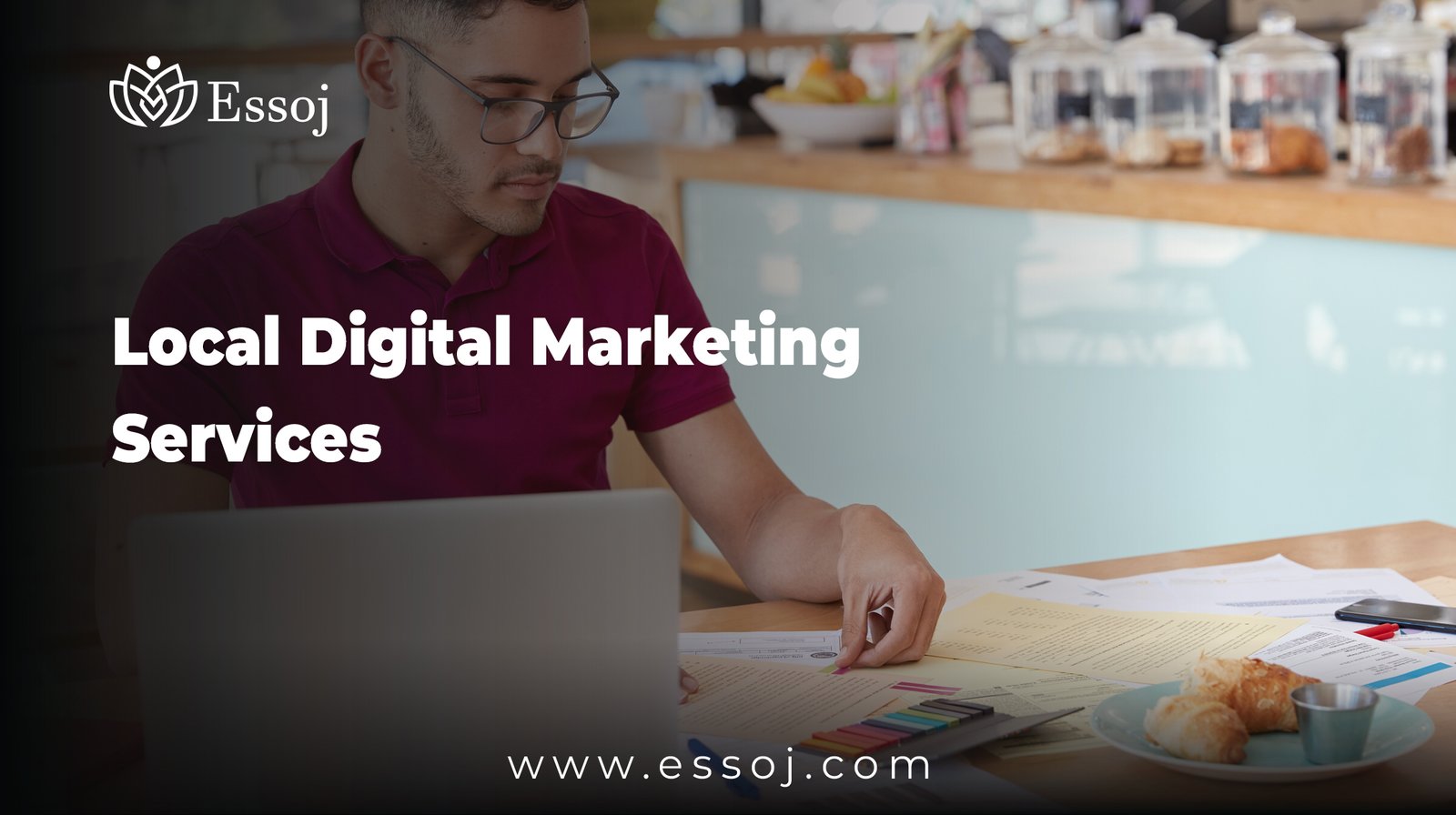In today’s fast-paced world, small businesses face unique challenges when it comes to marketing. With limited budgets and fierce competition from bigger brands, small companies need smart, effective strategies that bring real results. That’s where Local Digital Marketing Services come in. These services help small businesses connect with their immediate communities in meaningful ways, allowing them to stand out and grow without breaking the bank.
If you’re a small business owner or manager wondering how to make your marketing efforts more targeted and impactful, this article will guide you through the essential steps and strategies to boost your local presence and attract more customers.
What Exactly Are Local Digital Marketing Services?
Before diving into tactics, it’s important to understand what we mean by Local Digital Marketing Services. Unlike general digital marketing that targets broad or even global audiences, local marketing narrows the focus to a specific geographic area — your town, city, or region.
Think about it: a neighborhood bakery doesn’t need customers from across the country; they want to reach people within walking distance or a short drive. Local digital marketing tailors online strategies like local search optimization, geo-targeted ads, and community-based social media campaigns to reach these nearby customers.
This hyper-focused approach is especially helpful for small businesses because it reduces wasted ad spend and increases the chance of turning leads into loyal, local patrons.
Why Local Marketing Is a Must for Small Companies
Small companies thrive on community relationships, repeat customers, and word-of-mouth referrals. However, without visibility, even the best products or services can go unnoticed. Local digital marketing levels the playing field by giving small businesses tools to attract their ideal audience precisely where they live and shop.
Here are some reasons why investing in local digital marketing pays off:
- Cost Efficiency: You get more bang for your buck by only targeting the area where your potential customers actually live.
- Higher Conversion Rates: Localized marketing attracts people who are ready and willing to visit your store or book your service.
- Building Trust and Authority: Being active and visible in your local digital space builds credibility and loyalty.
- Enhanced Community Connection: Digital marketing can foster real relationships by involving your business in local stories and events.
- Standing Out Against Big Competitors: With a focused local strategy, small companies can compete effectively against national brands that don’t personalize their approach.
Step-by-Step Guide to Master Local Digital Marketing Services
Step 1: Define Your Local Audience in Detail
Knowing exactly who you want to reach is the foundation of any successful marketing strategy. For local businesses, this means understanding your community’s demographics, preferences, shopping habits, and online behavior.
You might discover that your ideal customers are young families, busy professionals, or seniors, each with different needs and online habits. This information helps tailor your message and decide where to spend your marketing dollars.
For example, a local pet grooming business might find that its core customers follow pet-related social media pages and frequently search for “dog grooming near me.”
Step 2: Strengthen Your Online Presence with Local SEO
Search engine optimization tailored for local results is crucial. Local SEO ensures your business appears when someone nearby searches for products or services you offer.
To improve your local SEO:
- Make sure your business name, address, and phone number (NAP) are consistent across all platforms.
- Include location keywords naturally in your website content.
- Use schema markup on your website to help search engines understand your local relevance.
- Create localized landing pages if you serve multiple neighborhoods or cities.
- Optimize for mobile since many local searches happen on phones.
By investing time in local SEO, you increase the likelihood that your business will show up in Google’s local pack, maps, and organic results — places where most customers begin their buying journey.
Step 3: Claim and Maximize Your Google Business Profile
Your Google Business Profile (formerly Google My Business) is like your digital storefront on Google. It directly influences how your business appears in search results and on Google Maps.
Claim your profile and make sure every detail is accurate:
- Business name, address, phone number, and website link.
- Clear business hours, including holiday schedules.
- High-quality photos that showcase your location, products, or team.
- Regularly updated posts and special offers.
- Prompt and professional responses to customer reviews.
An optimized Google Business Profile increases local trust and can often be the first impression potential customers have of your business.
Step 4: Create and Share Localized Content
Content marketing isn’t just for big brands. Small businesses can also benefit greatly by sharing content that resonates with their local audience.
Ideas include:
- Blog posts about local events or news relevant to your industry.
- Highlighting collaborations with other local businesses.
- Sharing customer stories or testimonials from people in your area.
- Videos showcasing your team and behind-the-scenes looks at your daily operations.
This type of content makes your business feel relatable and part of the community, which can foster stronger connections and loyalty.
Step 5: Harness Social Media to Connect Locally
Social media is a powerful tool for building relationships in your community. Instead of just broadcasting sales messages, focus on genuine engagement.
- Join local Facebook groups or community pages.
- Share photos and stories that highlight local culture or events.
- Run social media ads targeted by location and interests.
- Encourage customers to tag your business in their posts.
Engagement on social media helps spread word-of-mouth digitally and positions your business as a familiar, trusted local presence.
Step 6: Invest in Geo-Targeted Paid Ads
Paid advertising, when done strategically, can drive quick and measurable results. Platforms like Facebook and Google allow you to set geographic parameters for your ads.
Consider:
- Promoting seasonal deals or special events.
- Advertising to users who recently searched for similar services nearby.
- Retargeting website visitors with reminders to come back.
By focusing your advertising budget on local prospects, you maximize the effectiveness of every dollar spent.
Step 7: Collect and Respond to Online Reviews
Customer reviews are a form of social proof that heavily influence buying decisions today. Positive reviews build your reputation and help attract new customers.
Make it easy for customers to leave reviews on Google, Yelp, and other relevant platforms. Always respond graciously — thanking those who leave positive feedback and addressing any concerns in a professional manner.
A proactive review management approach strengthens your standing in the local community and boosts search rankings.
Step 8: Monitor Your Progress and Adapt Your Strategy
Digital marketing is not set-and-forget. Regularly analyze your data to see what’s working and what isn’t.
Look at:
- Website traffic and behavior patterns.
- Local search rankings.
- Social media engagement.
- Ad campaign results.
- Review trends.
Use these insights to refine your marketing efforts, whether it’s tweaking ad targeting, updating your website content, or engaging more on social media. Staying flexible and responsive is key to sustained success.
Real-World Example: How Local Marketing Transformed a Small Bookstore
Consider the story of Mike, who owns a small independent bookstore in a midsize town. When he first opened, Mike relied heavily on foot traffic and traditional flyers. Sales were steady but not growing.
After embracing Local Digital Marketing Services, Mike made some important changes:
- He optimized his website with local keywords like “bookstore near downtown” and “best local reads.”
- Claimed and regularly updated his Google Business Profile with events like author signings.
- Created blog posts about local literary festivals and shared book reviews.
- Used Facebook ads targeting book lovers within 10 miles of his store.
- Actively encouraged customers to leave online reviews and engaged with their comments.
Within a year, Mike saw a significant increase in both online and in-store customers. His business became a beloved community hub, proving the power of local digital marketing done right.
Additional Tips for Small Business Local Marketing Success
- Always keep your contact information consistent across all listings and platforms.
- Collaborate with other local businesses for joint events or promotions.
- Use email marketing to keep in touch with customers and share news or discounts.
- Invest in professional-quality photos and videos — visuals matter.
- Stay current with local marketing trends and tools to stay ahead.
Final Thought
For small companies aiming to grow in their local markets, Local Digital Marketing Services offer a practical, powerful path forward. With careful planning, ongoing engagement, and strategic investment, small businesses can thrive by connecting deeply with their communities.
In a landscape where every dollar counts, focusing on local audiences through SEO, social media, content, and targeted ads ensures that marketing budgets are used wisely and effectively.
If you’re ready to boost your small company’s visibility and build lasting relationships with customers, resources like essoj provide useful tools and insights to support your local marketing journey — helping you make smart decisions every step of the way.

